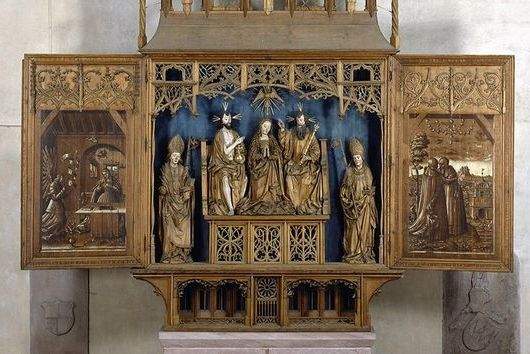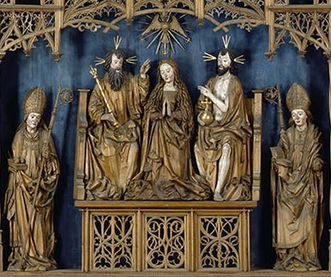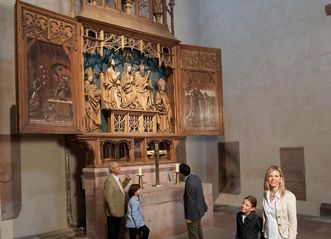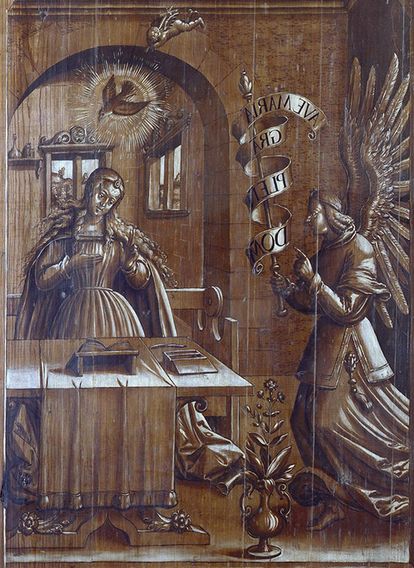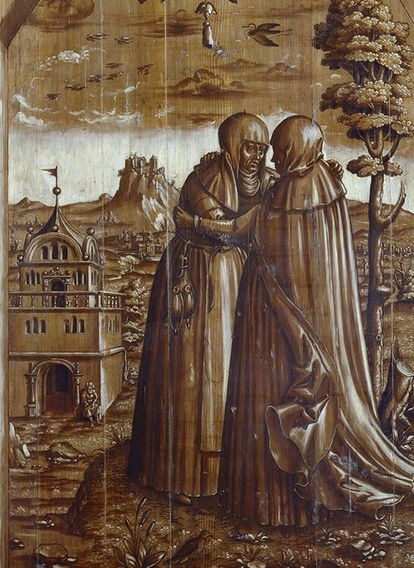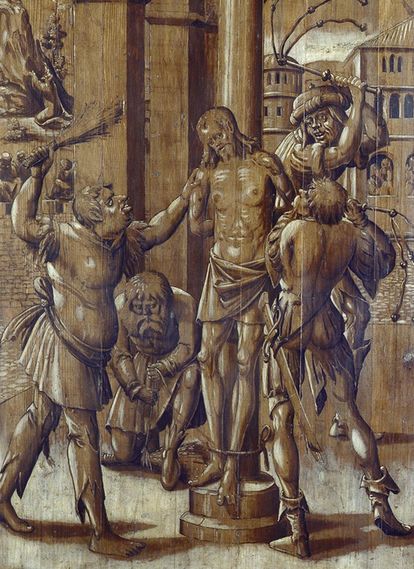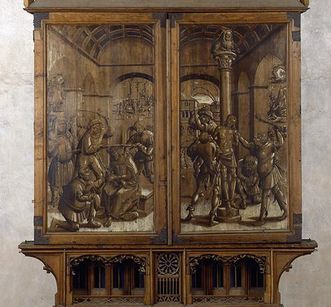LATE GOTHIC MASTERPIECE FROM AN ULM STUDIO
The late Gothic winged altar was created by Ulm sculptor Nikolaus Weckmann between 1520 and 1525. The fame of this Ulm master extended far beyond city limits over his lifetime. He maintained a large studio with numerous apprentices and assistants, with whom he produced a huge number of masterpieces. It has been proven that Weckmann worked with the most famous Ulm painters responsible for the altar paintings, which Weckmann then adorned with sculptures.



